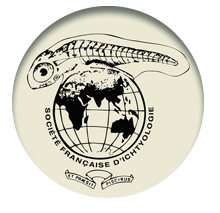First insights into karyotype evolution within the family Mormyridae
How to cite: Ozouf-Costaz, C., Coutanceau, J.-P., Bonillo, C., Belkadi, L., Fermon, Y., Agnèse, J.-F., Guidi-Rontani, C., & Paugy, D. (2015). First insights into karyotype evolution within the family Mormyridae. Cybium, 39(3): 227-236. https://doi.org/10.26028/CYBIUM/2015-393-006
The chromosomal diversity within six species of Mormyridae belonging to six different genera (Gnathonemus petersii, Marcusenius moorii, Ivindomyrus obdenboschi, Brienomyrus sp., Stomatorhinus walkeri and Petrocephalus microphthalmus) is investigated for the first time. These species have a conserved diploid chromosome number of 2n = 50 (except G. petersii 2n = 48) but different chromosome formulae, essentially involving pericentric inversions. C-banding has been used for the localization of heterochromatin. For a deeper interspecific comparison, several molecular markers were localized in the chromosomes by fluorescence in situ hybridization (FISH): a 18S rDNA probe; a microsatellite probe (GAA)10, and a telomeric probe (TTAGGG)7. The distribution of the 18S rDNA patterns, in particular, shows an amazing specific diversity, confirming a rapid radiation accompanied by major chromosome rearrangements.


